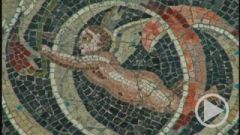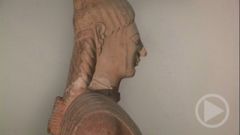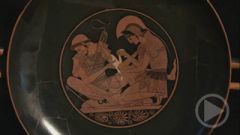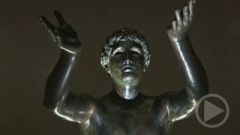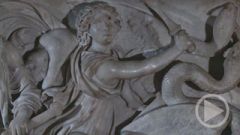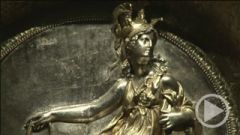- Home
- »
- Germany
- »
- Berlin
- »
- Museum Island
- »
- Pergamon Museum
- »
- The Collection of Classical Antiquities
- »
- The Pergamon Museum - Scythian Gold
Scythian Gold
Scythian Gold
One overcast day in the autumn of 1882, a farmer named August Lauschke was ploughing three deep furrows in his fields in Vettersfelde in Brandenburg to protect his winter seed from the continuous rain. When he checked to see if the water was running off properly, he was surprised to see gold glittering up at him from the earth. He dug up woven chains from the mud several, a massive necklace, a sheath for a sword and, not least of all, an enormous fish. It was 41 centimetres long and made of 608 grammes of pure gold.
Several pictures are engraved on the fish, with enormous goldsmith's artistry. There is a lion killing a deer, behind it a panther attacking a boar. Between the boar and the lion, you can see the legs of a rabbit that has unfortunately been lost. Below the pectoral fin, a man with the body of a fish leads a swarm of fish. The tail fin is an eagle; the tips are rams' heads. The fish probably once decorated a sumptuous shield and the depictions were meant to transfer the power of the animals to its owner.
For his fish, farmer Lauschke got its value in gold – 6,000 marks, even at the time, nothing to sneeze at. But above all the find was an archaeological sensation. The farmer had found a cache of 2500-year old Scythian treasures. The Scythians were a nomadic people who settled in southern Russia. They were in close contact with the Greeks and their expeditions took them all over Europe, including Brandenburg.
Vettersfelde today is in Poland and is called Witaszkowo. We now know that the gold was an offering. But forever lost in the mists of time is the answer to the question of who left the treasures as a gift to the gods in the middle of the marshes.



